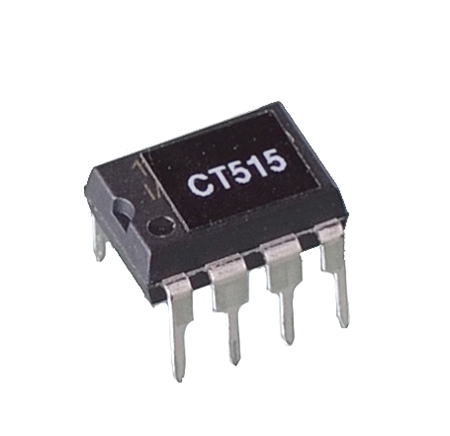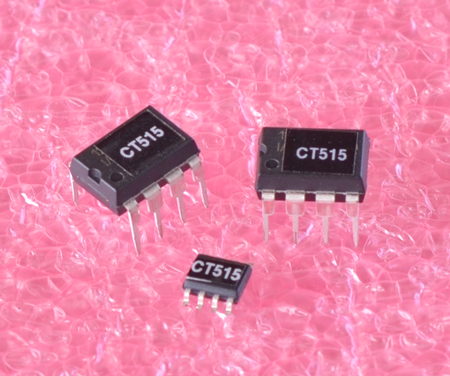Counter Debouncer
(CT515)

Buy Options
Description
The CT515 series is a counter/debouncer chip that adds 5 counter input channels to the OWL2pe, Basic Stamp, Propeller, Arduino, or other microcontroller system. The CT515 allows the µC to offload the tasks and to focus its resources elsewhere. On command, the CT515 delivers the accumulated counts for further processing.
The 5 channels can be used to monitor rain gauges, anemometers, flow meters, traffic counters, or any such device that closes a switch or generates pulses at a low rate. Low rate means less than 500 Hertz, 1ms high and 1 ms low.
The CT515b is the most recent version. It has a maximum frequency response of 500Hz. The high and low levels must be at least 1ms long. It is good for modern flow meters and the current version of the Davis vantage pro anomometer.
The CT515a version has a slower response than the CT515b. It is good for slow, bouncy mechanical switches. It has a maximum frequency of 120Hz.
The CT515w (weather station version) is the same as the CT515b but one of the 5 channels is an analog channel for a wind vane.
Debouncing is important for mechanical switches, which often bounce at the instant they are closed or released. Bounce can generate multiple pulses into the attached electronics. The CT515 ignores the rapid changes and responds only to stable levels. The CT515 is set for a debounce interval of one millisecond. Debouncing is also important where sensors or buttons are connected via long wires that might pick up electrical noise.
- rain gauge - tipping bucket rain gauges, such as the Davis 7852, have a magnetic reed switch that closes with each tip of the bucket, typically 2mm or 0.1inch per tip. The CT515 counts the number of tips in order to accumulate the total rainfall.
- anemometer - cup anemometers, such as the Davis 6410, have an electronic switch that closes once for each revolution of the cups. Wind speed is the number of counts divided by the time interval, multiplied by the anemometer calibration factor.
- flow meters - fluid flow meters have a switch that closes once or multiple times for each turn of the impeller. The total flow is proportional to the total number of pulses, and the instantaneous flow rate, as with the anemometer, is the number of pulses divided by the acquistion time interval.
- traffic counters - One or a set number of pulses for each event.
- push button(s) - Debouncing is important for mechanical push buttons, and a CT515 can accommodate up to 5 buttons in parallel.
- sensors - Many other types of sensors provide a frequency output, which can be monitored by the CT515. Frequency is a good parameter to transmit across an isolation barrier.
2229 5th Street, Berkeley, CA 94710 • (510) 848-5725 •


